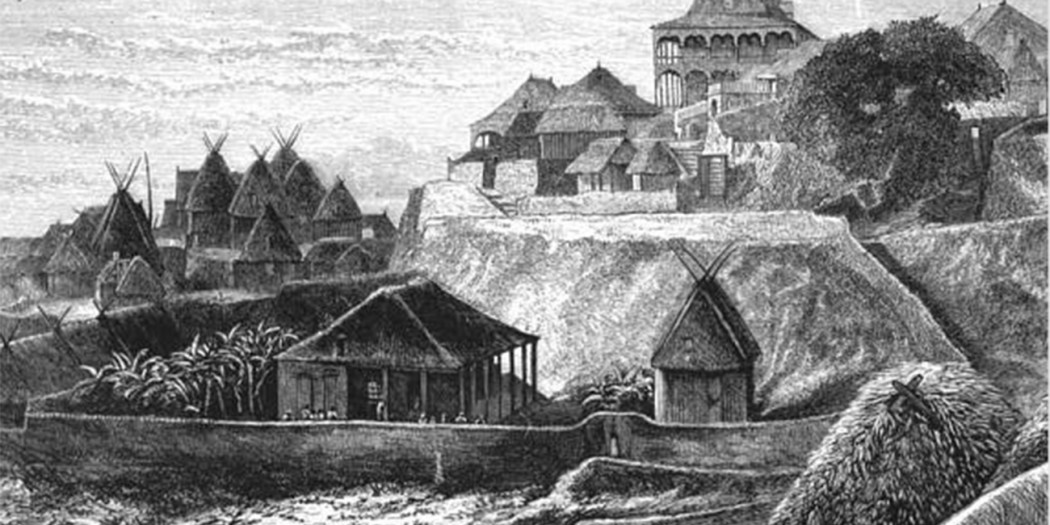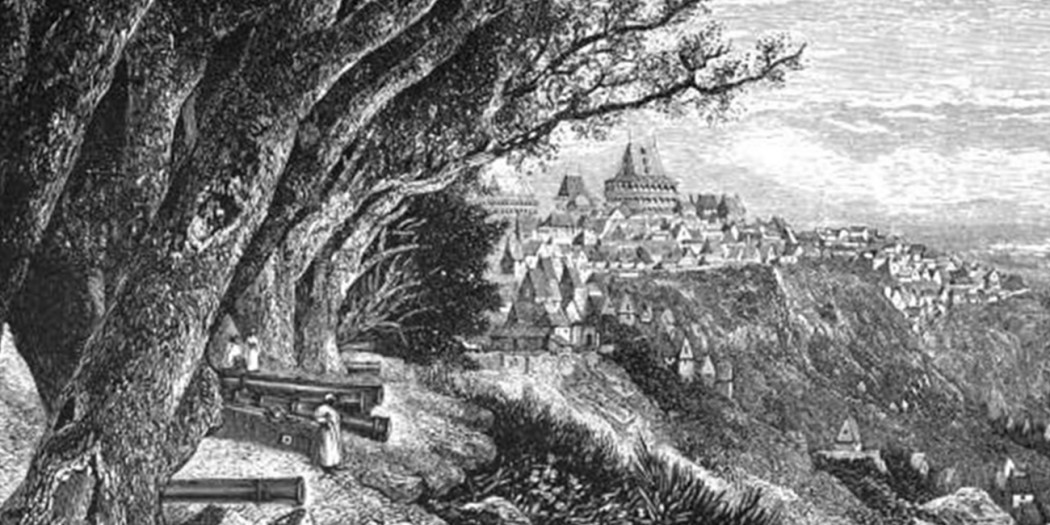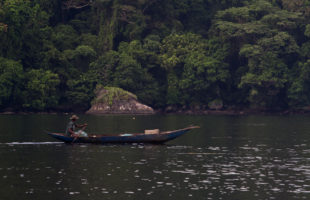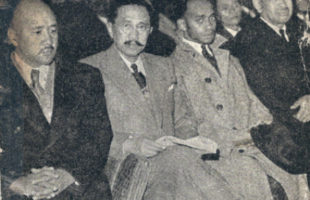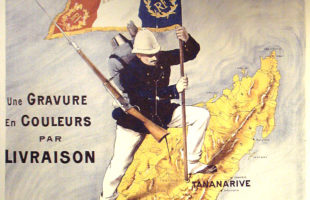According to deliverance, the first king of the Merina people was Andrianerinerina (andrian = king, Nerinerina = his actual name). Legend tells he came from heaven and subdued the legendary Vazimba people, and later Merina came out of this first people.
His regency was followed by the queens Andriananjavonana, Andrianamponga I., Andrianamboniravina, Andranolava, Rafandrandava, Ramasindohafandrana, Rafandrampohy and Rafandramenitra. Written evidence about the Merina’s kings and queens is known not before 16th century. The last named queen, Rangitamanjakatrimovavy, was crowned in 1520 and reigned ten years over the Merina people in Madagascar’s central highlands. She chose Imerimanjaka, one of the twelve sacred hills of Imerina, as her royal residence. After the queen’s death, Rangitas daughter Rafohy came into power in 1520. She is thought to have been a Vazimba. Some sources suggest that Rafohy was not Rangitas daughter, but an adopted sister of her or even her mother. Since the genealogical relationships of the royal family always were confusingly close, the exact circumstances remain unclear until today. Queen Rafohy reigned ten years at another sacred hill of Imerina, Alasora, which hosts the oldest Imerina village even today. Her second husband, Manelobe, is said to be a Hova. This people originally came from Southeastern Madagascar and began to settle the central highlands at these times. Rafohy beared one daughter by Manelobe and two sons: Rafotsindrindramanjaka, Andriamananitany and Andriamanelo.
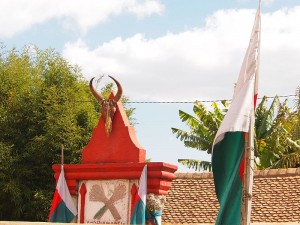
CC BY-SA 3.0 Lemurbaby
In 1540, Rafohy’s throne was taken over from her son Andriamanelo. Thus he was the first male king of Merina people, who had always had a queen in the tradition of the Vazimba. If the older of the two brothers would die, the right to own the crown would automatically fall to the younger brother. Andrimanelo today is seen as the founder of the Merina kingdom. He chased the Vazimba in western direction and extended his kingdom, which until then only occuoied the hill Alasora, to the sacred hill Merimanjaka in the North. During the wars against the Vazimba, which took several decades, iron spear heads were used for the first time – an innovation and determining advantage in the wars of these times. Additionally, Alasora was circumvallated with trenches (hadivory und hadifetsy) and a big stone gate (vavahady) to protect the inhabitants more easily. Andriamelo is also linked to the origins of circumcision rituals in boys, the traditional marriage vodiondry and astrology, sikidy. Furthermore, he is believed to have introduced a noble rank, the andriana. All in all, he’s thought to have been a progressive king for his time. He also let his people built the first rice fields, which today mainly characterize Madagascar’s highlands.
To add another sacred hill to his kingdom, Andriamanelo married a cousin on his mother’s side, called Ramaitsoanala. She was the daughter of astrologist Rabiby and his wife Ivorombe, who reigned the sacred hill Ambohidrabiby. Henceforth, Ramaitsoanala named herself Randapavola, and got known later on as queen Rasolobe. With the death of Rabiby, his land fell to king Andriamanelo. But the marriage between Rasolobe and Andriamaneo was ill-fated. Six births ended in the early death of the children, and only one son, Ralambo, reached adult age.
Andriamanelos own brother meanwhile made himself conspicuous by buildung provocative “God given” villages and gave public declarations that he wanted to reverse the line of succession. Thereupon, he was killed by Hova ambassadors, probably at his brother’s command. The orphaned son of Andriamananitany was then married to Andriamanelos sister. The marriage produced one daughter, who was in turn married as second wife to Andriamanelos only son Ralambo. As you can see from this few generations, marriage inside the same family was usual, it kept tenures and ensured the king’s sovereignty.
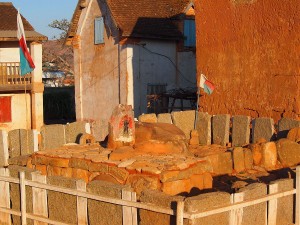
CC BY-SA 3.0 Lemurbaby
Ralambo became the new king of Merina people with Andriamanelo’s death in 1575. He built his royal house at the hill Ambohidrabiby, which thus became the kingdom’s capital. The name “Imerina” for the central highlands is delivered from him for the first time. Ralambo conducted numerous wars and attacks agains surrounding kingdoms, and convened the first army of the Merina people. Many legends tell of his cunning deeds even today: Once he outwitted the Betsimisaraka people, who wanted to attack the kingdom at night, while they were sleeping in Mandamako, and put the fear of God into a group of soldiers with one single rife – they jumped into the river Ikopa and drowned. Another time, he challenged a Vazimba king and then burned the village while the king was absent. In celebration of Ralambos birthday at the first of each year, festivities were introduced and went down in tradition as fandroana. For the first time, Ralambo declared zebu meat platable for the Merina people. Among the nobles (andriana), Ralambo implemented four more classes.
At the end of the 16th century, the Sampy began to play an increasing role. Sampy were spiritual items, mostly made of various materials like animal teeth, wood and metal. People attributed magical power to these pieces. King Ralambo collected the twelve mightiest Sampy of the surrounding areas and thus strengthened the royal powers of the Merina people. He owned kelimalaza, which was believed to be able to erase soldier troops, as well as Manjakatsiroa, which should protect the king against bad people. Furthermore, Ramahavaly, which was able to command snakes, belonged to his property, and Rafantaka, which should protect the king against death and diseases, was another Sampy. From now onwards, the Sampy did not anymore protect villages as it was their former use, but protected the whole Merina kingdom and its reign – as long as they were appropriately honoured. Originally, the Sampy came from the Antaimoro people, except Mosasa, which was made by the Tanala people.
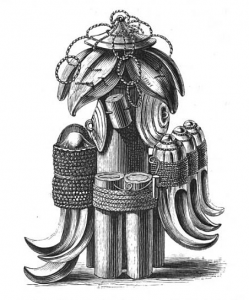
Ralambo married four women, with whom he had altogether three daughters and twelve sons. To the benefit of the firstborn son with Rasolobe, Andrianjaka, his actually older brother was by-passed in devolution of the crown, and Andrianjaka became king of the Merina people in 1612. The overlooked brother indeed claimed the throne, but was rejected by his own people. Andrianjaka had substantially contributed to the military successes of his father long before he became king. As young man, he already married Ravadifo, a daughter of prince Andriampanarivomanjaka. Two children resulted from the marriage.
The new king moved with his family to the sacred hill Ambohimanga and made it the center of his kingdom. During his regency, Andrianjaka turned the Sampy into Odys, which means personal talismans. From this time on, the twelve Sampy were considered as “Sampin’andrian”, royal Sampys. Other Sampys were burned or destroyed in other ways. The twelve hills, on which the Imerina kingdom was built at these times, were declared sacred and thus spiritual center of the kingdom. Each clan was assigned to one hill. As the first of the Merina kings, Andrianjaka welcomed Europeans in his kingdom and exchanged slaves against weapons. Over the course of his increasing power, Andrianjaka also changed the trial by ordeal. Until then, a defendant’s cock was given poison, and the surviving of the animal decided the defendant’s fate and debt. Andrianjaka established, that not the animal, but the defendant himself had to swallow the poison.
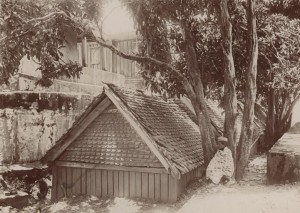
King Andrianjaka decreend besides others, that women were no more allowed to become kings. Although the last kings had all been men, this was an implicite break with old traditions deriving from the Vazimba. Andrianjaka finally chased away the Vazimba people from the central highlands forever and occupied the hill Analamanga with around 1000 soldiers by pure superiority. Already his grandfather had wanted to reign this hill. At the top of the highest of the twelve hills, the king built the Rova and founded a new village below it. He called it the city of thousands, in Malagasy Antananarivo. Even today, the Rova is located at this place right in the middle of Madagascar’s capital – although it was burned and rebuilt several times. Around 1630, the king died. He was the first to be buried at the Rova’s court.
His son Andriantsitakatrandriana became Andrianjakas successor. To nourish his increasing people, he ordered new rice terraces and therefore mainly used the swamps of Betsimitatratra around Analamanga hil. Andriantsitakatrandriana married two wifes, Ravololontsimitovy and Rafoloarivo. After he thwarted a ceremony prepared by his son to strengthen the own power in opposite to the king, Andriantsitakatrandriana banished his second wife with his son from the kingdom. Not much more is known from his regency period, and he died after about 20 years as king.
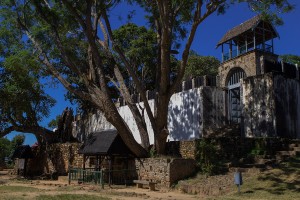
In 1650, his son Andriantsimitoviaminandriandehibe (the noble, who has no comparable among nobles) ascended the throne. He married three wifes, Ratompoimbahoaka from Ambohimalaza, princess Ramahafoloarivo (his own niece) and princess Rafaravavy. The king separated his empire in a northern and a southern part, split by the river Ikopa. He delegated two of his sons to supervise the expansion of the rice terraces, who then of course tried to outdo each other by speed and quality of the rice fields. The younger Andrianjakanavalonadambo proved to be quicker, but in fact the older Razakatsitakatrandriana was appointed heir of the throne. He thus gained regency over Antananarivo, Ambohidrabiby and Ambohimanga. The king counseled his younger son to wait for his time to come and be patient, what the son did. He contented himself with Alasora and five other less important hills.
 MADAMAGAZINE Your Magazine about Madagascar
MADAMAGAZINE Your Magazine about Madagascar
